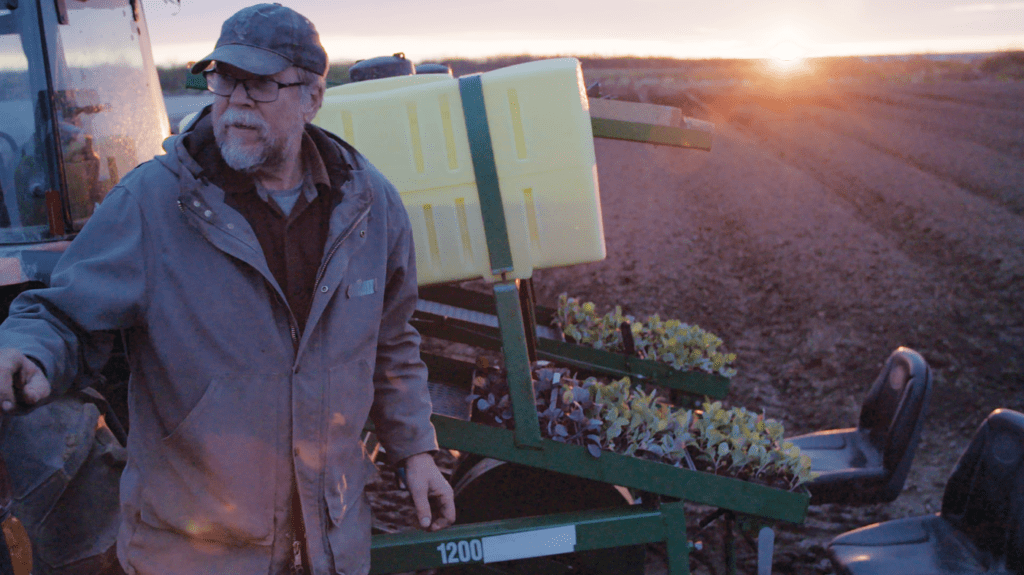May 22, 2019Alaska growers featured Thursday in season finale for TV series
The History Channel’s eight-part exploration of U.S. agriculture will finish the season 10 p.m. Thursday, May 23 with a glimpse of growing vegetables in the far north.
The series, called The American Farm, follows growers at family farms across the country. It comes from the creators of “Deadliest Catch” and “Storage Wars.”
While most of the five farmers featured in the series are primarily involved in grain, cattle and dairy operations, Meyers Farm in Bethel, Alaska grows fruit and vegetables. Tim and Lisa Meyers and their four daughters farm a variety of crops on 8-9 acres.
“You’ll see all the families in the finale,” Executive Producer Jeff Conroy said a phone interview. ”I think it’s one of the best episodes of television I’ve ever been involved in.”
Conroy said The American Farm is similar to other reality series he’s worked on in that the subjects are subjecting themselves to financial risk for greater financial reward.
“We certainly get into the family in this show – that’s a difference,” he said. “The crew on a farm is the entire family – they are still bosses and employees.”
An article profiling the Meyers family appeared in the May edition of Fruit Growers News. The family has established a fruit and vegetable farm near Bethel growing strawberries, raspberries, zucchini, cucumbers, turnips, carrots, tomatoes, radishes, potatoes, cauliflower and cabbage. Their produce is sold through a subscription box system, what some growers often call a community supported agriculture system or CSA.
Cameras captured the family’s ups and downs over a season.
“The season went really well, from a growing perspective,” Conroy said. “There were certainly setbacks and equipment failures. I think the biggest challenge for them is figuring out their market. It’s one thing to grow amazing vegetables and fruit and all, but where are you going to get a market built up? In Alaska, for them, it’s a lot about shipping stuff in. To kind of break that system and that cycle and be growing that right there, essentially in the tundra – that’s the bigger challenge.”
The Meyer’s youngest daughter leads the effort to solve some of the distribution and business challenges, he said.
“As we’re going into the finale, they’ve had some setbacks in terms of distribution,” he said. “She’s the champion of her dad’s vegetables, and looking this as: This is not a hobby, is a business. How do we expand and make it sustainable.”
– Stephen Kloosterman, VGN associate editor
Photo: History Channel















